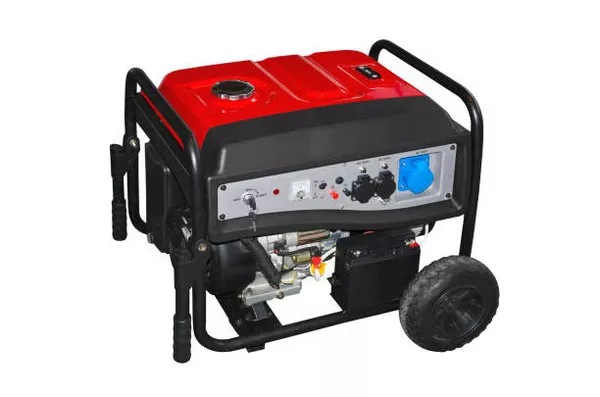In the realm of portable generators, the market is flooded with a plethora of accessories that promise to enhance functionality, improve mobility, and provide a seamless user experience. However, the question that often arises is whether these accessories are a necessity or just an additional expense. To address the queries and concerns of our readers, we have compiled a comprehensive guide to portable generator accessories, exploring their utility, benefits, and potential pitfalls.
Understanding Third-Party Accessories:
Before delving into specific accessories, it’s crucial to address the topic of third-party accessories. While the market offers a myriad of options from various manufacturers, we highly recommend sticking to official accessories supplied and recommended by the generator’s manufacturer. Opting for third-party accessories might compromise compatibility, safety, and warranty terms, emphasizing the need for caution and thorough research.
Enhancing Mobility:
Wheel Kits: Portable generators might not always live up to their name, being too heavy to carry around effortlessly. Wheel kits, typically consisting of attachable wheels and a folding handle, provide a practical solution to enhance horizontal mobility. This section explores the importance of wheel kits, their cost range, and considerations for those looking to improve the portability of their generators.
Lifting Kits and Hanger Kits: For generators requiring vertical mobility, lifting kits and hanger kits come into play. These accessories, including a steel crossbar, facilitate easy transportation. Details on their functionality, cost, and relevance, especially for generators equipped with cranes, are covered in this section.
Adapters and Extension Cords: With multiple outlets but not always enough for various devices, adapters become essential. The guide explains the significance of adapters, their types, and common use cases. Additionally, extension cords are explored as indispensable accessories, with insights into suitable lengths, gauges, and associated costs.
Bonding Plugs: In-depth information on bonding plugs, also known as Edison plugs, is provided. These plugs are crucial for users running generators with a floating neutral, addressing potential issues related to electrical protection products.
Parallel Kits: For users seeking flexibility in power output, parallel kits are discussed. Whether in the form of cables or outlet boxes, these kits enable running multiple generators simultaneously. The section covers compatibility, types, and the cost range for parallel kits.
Meters: Knowledge about clamp meters (voltmeters, current testers) and vibration-activated hour meters is shared. These meters offer insights into a generator’s output, helping users make informed decisions about its usage and maintenance.
Remote Start and Advanced Kits:
Transfer Switches: For those considering using a portable generator as a backup power source for their homes, transfer switches become indispensable. The guide outlines the types of transfer switches, manual and automatic, and emphasizes their role in ensuring safety and convenience.
Extended-Run Fuel Tanks/Extended Fuel Systems: Users looking to extend their generator’s runtime explore the options of extended-run fuel tanks and systems. The guide covers the two methods of transporting gasoline and sheds light on the complexities and considerations involved in these systems.
Maintenance Accessories:
Fuel Stabilizers: The importance of fuel stabilizers in maintaining the health of a generator’s engine is discussed. The guide explains how stabilizers prevent issues like gum development and protect the carburetor.
Magnetic Oil Dipsticks: While oil itself might not be maintainable, the guide introduces magnetic oil dipsticks as essential tools for handling metal shavings in the oil, enhancing the generator’s longevity.
Maintenance Kits: Insights into maintenance kits, bundling filters, oil, spark plugs, and cleaning equipment, are provided. The guide discusses the pros and cons of purchasing complete kits versus individual components based on user needs.
Covers: The significance of storage covers and storm covers is explored. Users are guided on choosing model-specific covers and storm covers for running generators in adverse weather conditions.
Accessories for Extreme Conditions:
Cold Weather Kits: For users operating generators in freezing conditions, cold weather kits are highlighted. The guide explains their components, installation, and the importance of preventing frost-related issues in the crankcase breather tube.
Altitude Kits: Understanding altitude kits, which adjust carburetor flow based on elevation, is crucial for users at high altitudes. The guide delves into the considerations and necessity of these kits.
Remote Start Kits: Exploring remote start kits, the guide outlines their role in enabling remote activation of generators. Users are informed about the compatibility, costs, and potential challenges associated with these kits.
See Also What Are The Different Methods Used For Transformer Cooling
Tuning Your Portable Generator – Cautionary Tales:
Fuel Conversion Kits: The guide discusses the controversial realm of fuel conversion kits, which allow generators to run on fuels other than gasoline. Potential warranty and performance issues are addressed, urging caution.
Silencers/Mufflers: While the desire for a quieter generator exists, the guide advises against silencers and mufflers due to potential warranty voids and exhaust flow restrictions.
Exhaust Extensions: Strongly discouraging the use of exhaust extensions for running generators indoors, the guide emphasizes the critical importance of outdoor operation for safety.
Final Remarks:
Concluding the comprehensive guide, readers are reminded of the diverse functionalities and considerations associated with portable generator accessories. Whether functional, practical, or technical, each accessory serves a purpose in enhancing the overall generator experience. Emphasizing the inevitability of acquiring some of these accessories, the guide encourages users to make informed decisions based on their specific needs and preferences.

